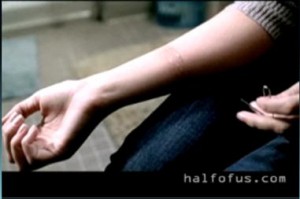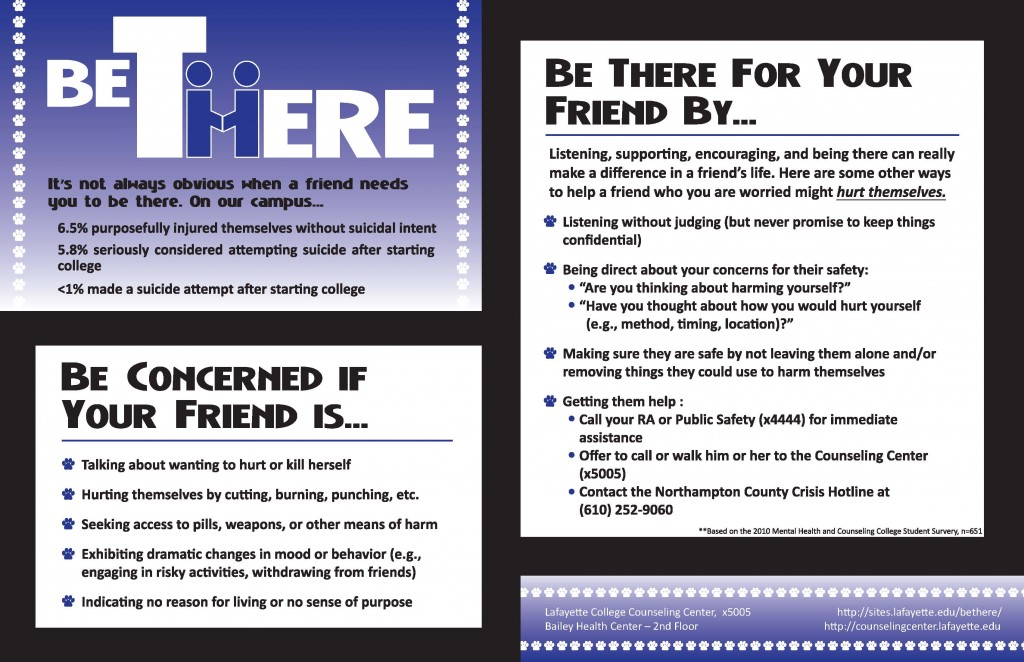It’s not always obvious when a friend needs you to be there. On our campus. . .
- 6.5% purposefully injured themselves without suicidal intent
- 5.8% seriously considered attempting suicide after starting college
- <1% made a suicide attempt after starting college
**Based on the Mental Health & Counseling Student Survey (2010)
—————————
Be Concerned If Your Friend Is. . .
- Talking about wanting to hurt or kill themself
- Hurting themselves by cutting, burning, punching, etc.
- Seeking access to pills, weapons, or other means of harm
- Exhibiting dramatic changes in mood or behavior (e.g., engaging in risky activities, withdrawing from friends)
- Indicating no reason for living or no sense of purpose
—————————
Be There For Your Friend By. . .
Listening, supporting, encouraging, and just being there can really make a difference in a friend’s life.
Here are some other ways to help a friend who you are worried might hurt themselves.
- Listening without judging (but never promise to keep things confidential)
- Being direct about your concerns for their safety
- “Are you thinking about harming yourself?”
- “Have you thought about how you would hurt yourself (e.g., method, timing, location)?”
- Making sure they are safe by not leaving them alone and/or removing things they could use to harm themselves
- Getting them help
- Call your RA or Public Safety (x4444) for immediate assistance
- Offer to call or walk him or her to the Counseling Center (x5005)
- Contact the Northampton County Crisis Hotline at (610) 252-9060
—————————
Additional Resources. . .
The Jed Foundation
ULifeline
National Suicide Prevention Lifeline (1-800-273-TALK)
Self-Injurious Behavior (PDF)



